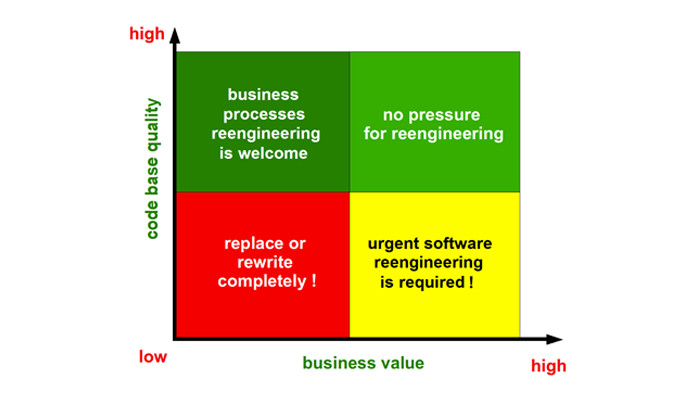
CTO Insights #1 with Christian Longberg— “Processes stop people from being creative”
|
|

Technologies develop quickly, and as a result, a system created several years ago can hardly meet today’s demands. End users will not tolerate poor performance, errors or other signs of aging software. A system can also appear obsolete if it is unable to process an increasing amount of data, difficulties in system maintenance and expanding functionality are present as well as complicated or impossible integration with the latest technologies and systems. In these cases, a question about system reengineering can be raised.
System reengineering is the process of improving existing software (refactoring) or creating new software with the same functionality, changing the system architecture and/or the data structure, adding functionality and updating stack of deprecated technologies.
A key element of reengineering is to increase the company’s business value and to improve the source code quality. Depending on source code quality and business value, you may need business processes reengineering, software reengineering or complete rewriting (redeveloping).
The following strategies can be used when reengineering a software system:


To stay afloat in any industry, businesses have to keep up with contemporary trends and technologies to meet the expectations of users and customers. That’s why reengineering is a necessity.
When you choose the best option of reengineering your system, you should consider possible problems that may arise, advantages that will appear and the budget of the planned changes; the cost of reengineering the system and maintaining a new one can be much less than the cost of maintaining the current system over time.
The IT team chosen for reengineering should have adequate expertise and be skilled in analyzing and examining your current system to work out the best strategy for its reengineering on the basis of requirements, and to implement this process on a high level. INSART has experience in reengineering and can provide full research, justify the most adequate changes for your system and implement your requirements.